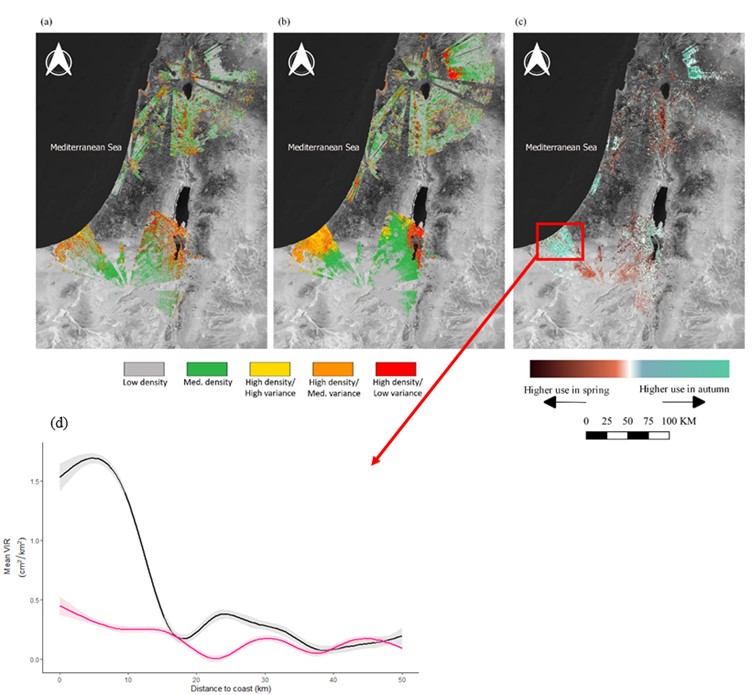Migratory birds have been found to steeply decline in recent decades. Research and conservation efforts have mostly focused on protecting breeding habitats or wintering
grounds and only rarely on stopover habitats used by birds during migration although migration is the period when the risk of mortality is the highest. Since most of the migration time is spent on refueling and resting rather than in active migratory flight, the ability of the birds to accomplish the journey, as well as their survival and breeding output following migration, depend on the availability and the quality of stopover sites. The use of weather surveillance radars is the only method allowing broad-scale investigation of stopover site use, including characterizing the factors responsible for migrant spatial distribution. Using low elevation scans of weather radars in Israel, we quantified large-scale bird departure patterns during spring and autumn in between two major ecological barriers, the Sahara Desert and the Mediterranean Sea. This work
is pivotal in addressing major knowledge gaps regarding broad, nation-wide stopover distributions within unique geographic settings.
We identified a few high-priority areas for conservation of migrating passerines, which have been used differently in spring and autumn. The coastal region for example, has
very high densities of birds during the autumn while being the most populated region in Israel. Our quantitative and spatially-explicit metrics of bird stopover intensities can be used by different stakeholders to minimize different current and future risks to migrating passerines.
One of the important influencing covariates was the distance to ALAN (Artificial Light At Night) with higher densities of birds near bright artificial light sources. Thus, attraction to ALAN could be regarded as an ecological trap, as the selection of stopover habitats by individual birds may cause higher mortality because these habitat are dangerous.
We recommend considering our findings in the land-use planning policy at local, regional and national scales, to conserve migratory birds and their stopover areas at different times of the year. Specifically, we highly recommend keeping open, undisturbed natural habitats in coastal areas and prohibiting vegetation removal at the desert and its edges.
For more information see the research article at: https://www.frontiersin.org/articles/10.3389/fevo.2022.822220/full
Schekler I, Smolinsky JA, Troupin D, Buler JJ and Sapir N (2022) Bird Migration at the Edge – Geographic and Anthropogenic Factors but Not Habitat Properties Drive Season-Specific Spatial Stopover Distributions Near Wide Ecological Barriers. Front. Ecol. Evol. 10:822220.

